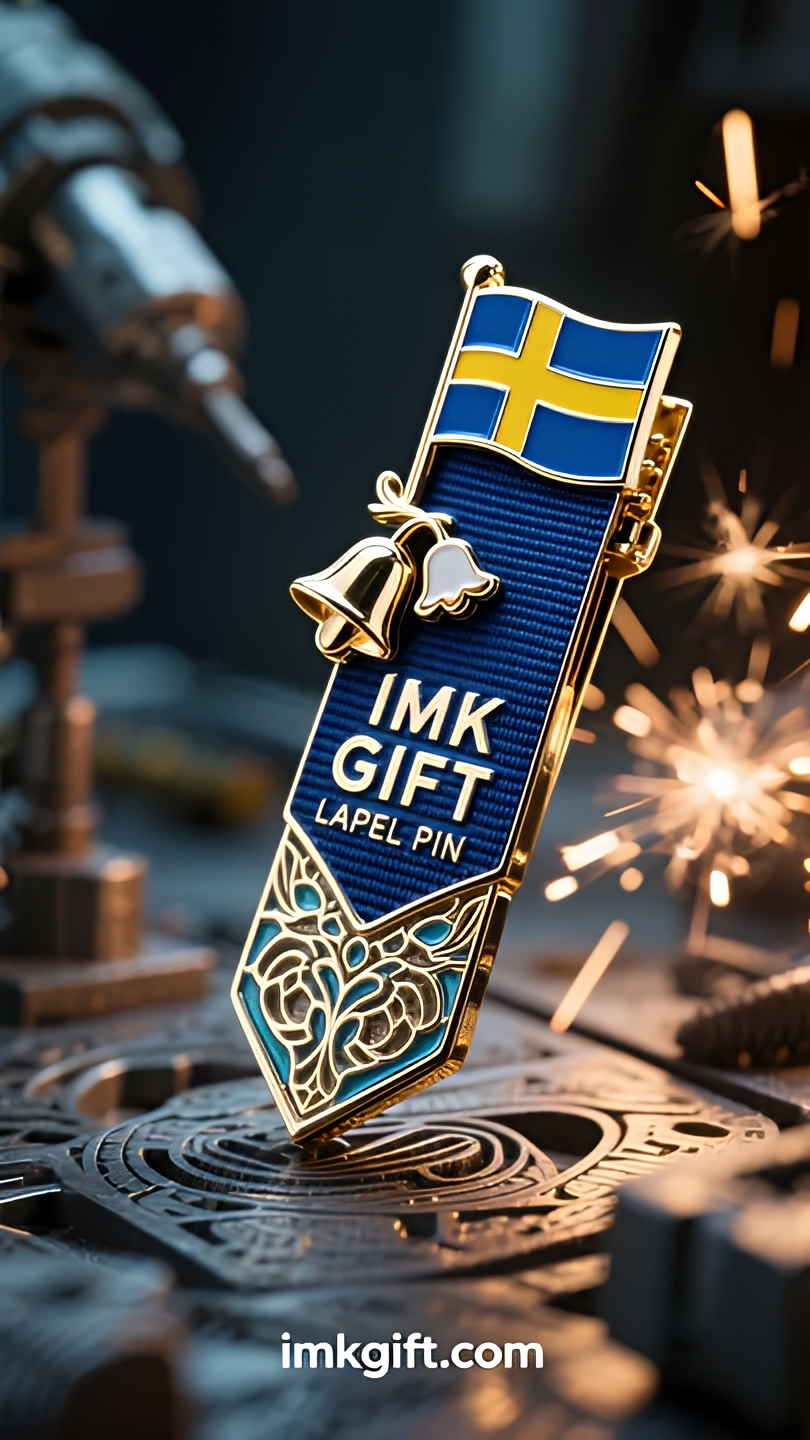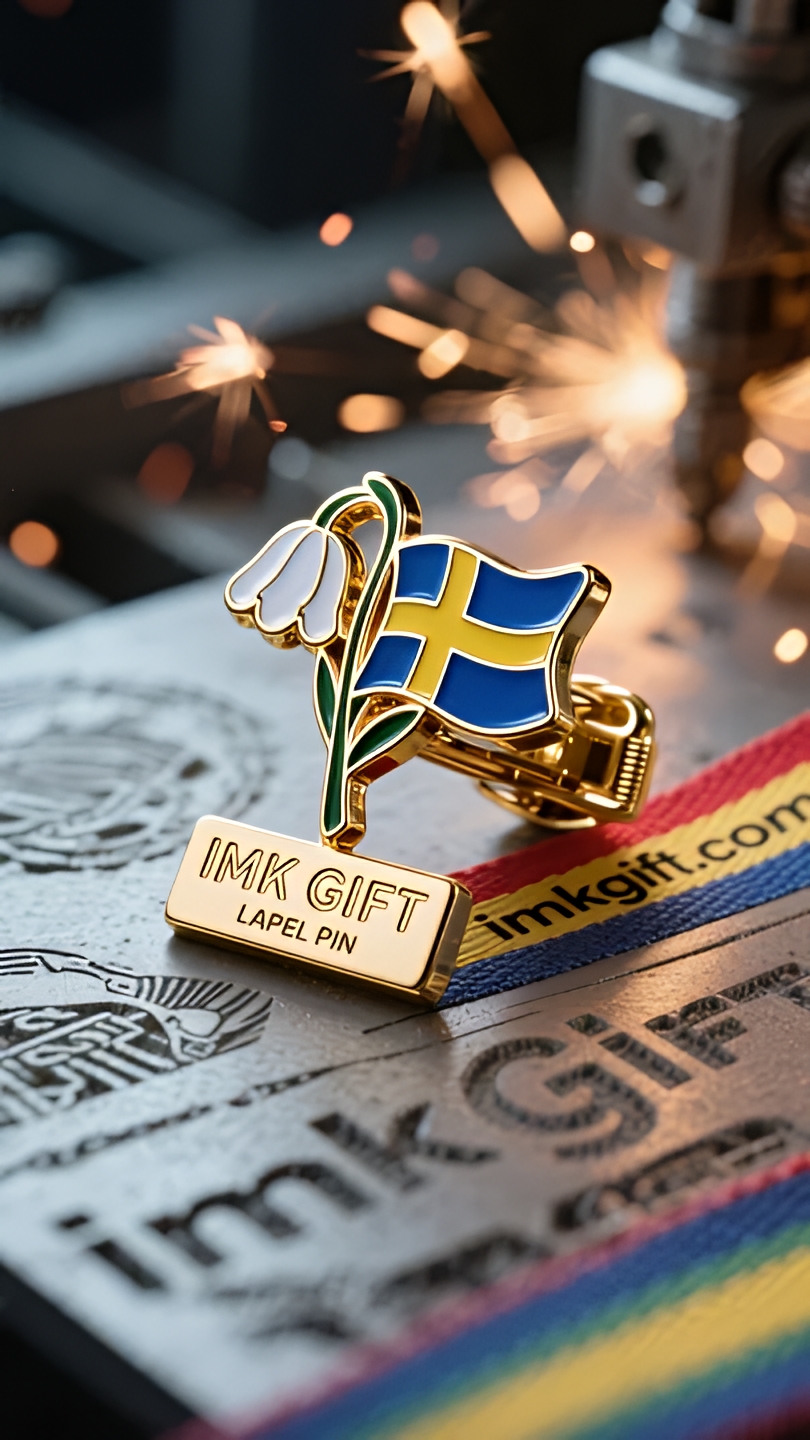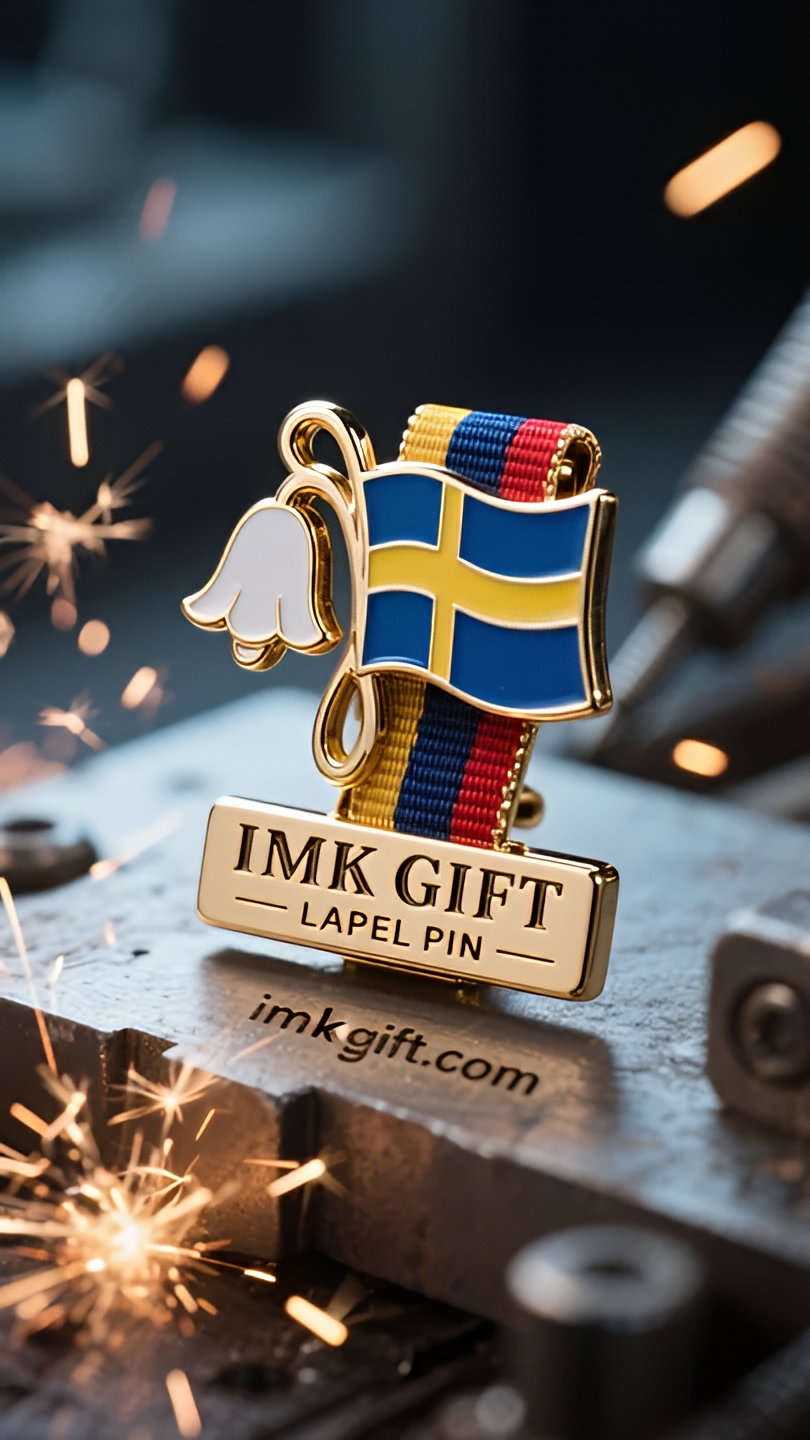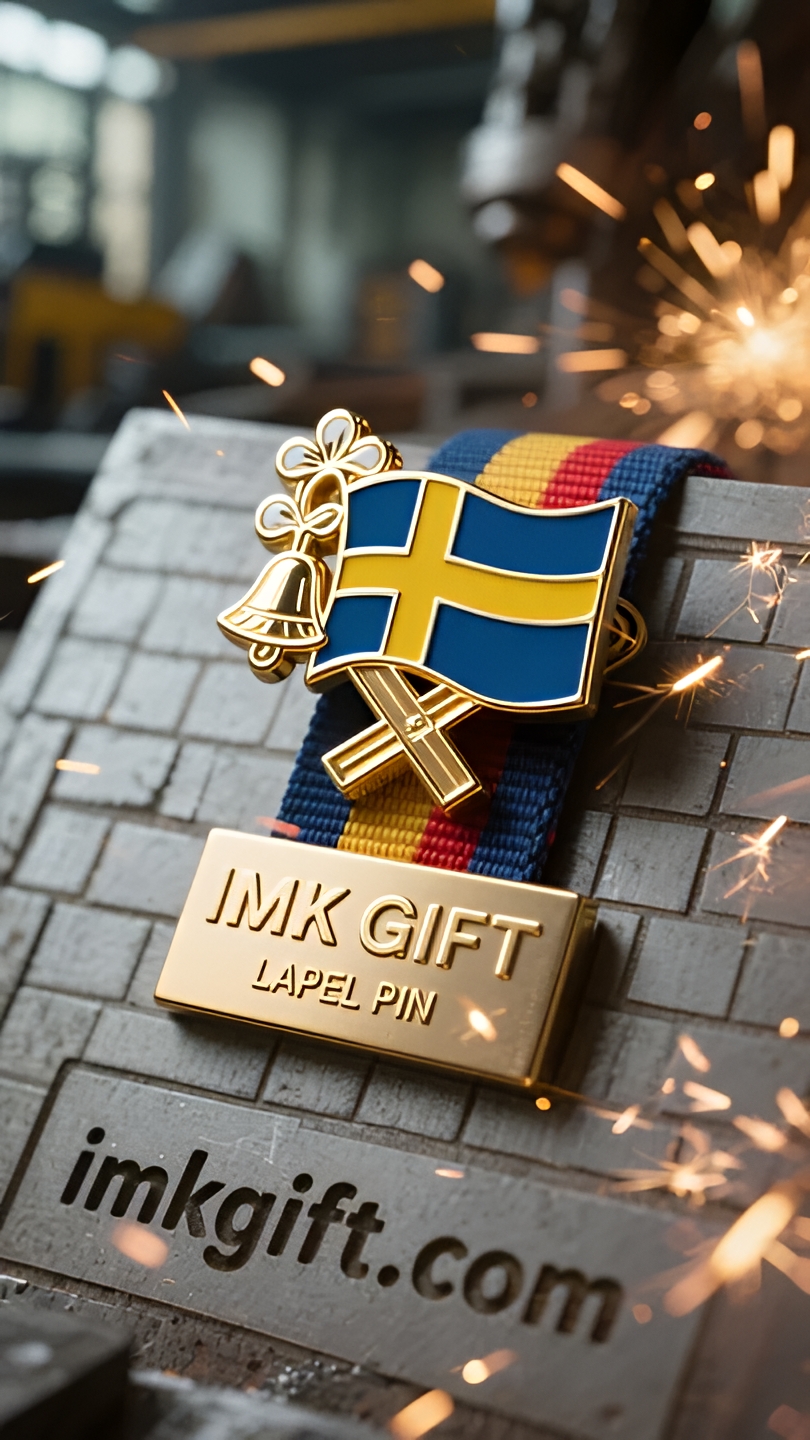in985-Liljekonvalj-och-den-blå-och-gula-flaggan-Individuellt-ljus-som-blommar-i-kollektivet
▼
I juni i Sverige hissas den blågula nationalflaggan i midsommardagens morgonljus, och på många herrars kragar blinkar tyst slipsklämmor formade som liljekonvaljer. Denna till synes vardagliga dekoration är faktiskt den mest poetiska fotnoten till den nordiska andan. Liljekonvalj är Sveriges nationalblomma. Dess klockliknande vita blommor symboliserar inte bara individens rena ursprungliga avsikt, utan sammanfaller också implicit med den tro på enhet som har förts vidare sedan vikingatiden. Varje liljekonvalj blommar oberoende av varandra, men tillsammans väver de vårens fräschaste landskap. Precis som slipsklämman håller metallens fasthet uppe blommans skönhet och påminner människor om att sann styrka kommer från envis självkänsla och ett milt stöd för kollektivet. Korstotemen på den blågula flaggan har sitt ursprung i den medeltida traditionen att sy ihop tyger av olika färger till stridsrockar. Den sönderrivna kragen återföds med integrationen av olika färger, precis som det moderna samhället – när varje unik själ hittar sin riktning av tillhörighet kan en mer magnifik bild av civilisationen vävas. Den nationella flaggan på slipsklämman är inte längre en enkel symbol, utan en hemlig resonans mellan individen och landets öde. I svenskarnas ögon är den bästa hyllningen aldrig att dränka sig själv i strömmen, utan att vara som en slipsklämma i liljekonvalj, som inte bara blir det skelett som bär upp kollektivet utan också förbehåller sig rätten att glänsa. Denna lilla metallskapelse avslöjar äntligen sanningen på ett ödmjukt sätt: bara otaliga fritt lysande stjärnor kan lysa upp natthimlen för en hel nation.
In June in Sweden, the blue and yellow national flag spreads in the morning light of Midsummer Festival, and on the collars of many gentlemen, lily of the valley-shaped tie clips are quietly flashing. This seemingly ordinary decoration is actually the most poetic footnote to the Nordic spirit. As the national flower of Sweden, the lily of the valley, with its bell-like white flowers, not only symbolizes the pure original intention of the individual, but also coincides with the belief in unity that has been circulated in the Viking era – each lily of the valley blooms independently, but together weaves the freshest scenery of spring. Just like the tie clip, the firmness of metal holds up the beauty of the flower, reminding people that true strength comes from the adherence to self-worth and the gentle support for the collective. The cross totem of the blue and yellow national flag originated from the tradition of sewing different colored fabrics into battle robes in the Middle Ages. The torn lapel is reborn due to the integration of different colors, just like modern society – when each unique soul finds the direction of belonging, it can weave a more magnificent picture of civilization. The national flag element on the tie clip is no longer a simple symbol at this moment, but a secret resonance of the fate of the individual and the country. In the eyes of the Swedes, the best tribute is never to drown oneself in the torrent, but to be like a lily of the valley tie clip, which not only becomes the skeleton supporting the collective, but also retains the right to shine. This small metal creation finally reveals the truth with humility: only countless freely shining stars can illuminate the night sky of the entire nation.
六月的瑞典,蓝黄国旗在仲夏节的晨光中舒展,而许多绅士的领口,一枚枚铃兰造型的领带夹正悄然闪光。这看似寻常的装饰,实则是北欧精神最诗意的注脚。
铃兰作为瑞典国花,其铃铛般的洁白花朵,既象征个体的纯粹初心,也暗合维京时代流传的团结信仰——每一朵铃兰独立绽放,却共同编织出春日最清新的风景。正如那枚领带夹,以金属的坚定托起花朵的柔美,提醒人们:真正的力量,源于对自我价值的坚守与对集体的温柔托举。
而蓝黄国旗的十字图腾,源自中世纪将异色布料缝入战袍的传统。破损的衣襟因不同色彩的融入重获新生,恰似现代社会——当每个独特的灵魂找到归属的方向,便能交织出更瑰丽的文明图景。领带夹上的国旗元素,此刻不再是简单的符号,而是个体与家国命运的隐秘共振。
在瑞典人眼中,最好的致敬从不是淹没自我于洪流,而是如铃兰领带夹般,既成为支撑集体的骨架,也保留绽放光芒的权利。这枚小小的金属造物,终以谦卑之姿道破真理:唯有无数自在闪耀的星辰,才能照亮整片民族的夜空。
▼
Contact Us
📞 Tel: +0086-760-85286839
📧 Email: sales3@imkgift.com








